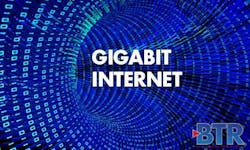The COVID-19 pandemic has made it even more apparent that broadband speeds need to continue to increase. In the midst, CableLabs has released its DOCSIS 4.0 specification, which is intended to further the industry along the path to 10G. The technology is designed to achieve a downstream speed of up to 10 Gbps, which doubles the speed available with DOCSIS 3.1, and an upstream speed of up to 6 Gbps, which quadruples that available with DOCSIS 3.1.
"As cable operators respond to the evolving connectivity needs of customers in our current public health crisis, remote work, learning, and health services stand to benefit from upstream broadband enhancements as DOCSIS 4.0 technology is deployed," Doug Jones, principal architect, wrote in a blog post.
In the past, upstream speeds were important for businesses that needed to upload large files, but not necessarily for the average residential customer. This is changing as people need their connections for distance learning, for an increasing number of smart home applications, for video conferencing from home offices, and for cloud applications, Jones said.
Full Duplex DOCSIS (FDX) is a part of the DOCSIS 4.0 spec that increases upstream capacity and enables symmetrical multi-gigabit services over hybrid fiber/coax (HFC) networks. With full duplex, upstream and downstream traffic are able to use the same spectrum simultaneously by leveraging HFC network characteristics, self-interference cancellation technology and intelligent scheduling.
"By enabling Full Duplex DOCSIS, the upstream and downstream traffic can flow at 10 gigabits concurrently, doubling the efficiency of the spectrum use," said Phil McKinney, president and CEO of CableLabs.
DOCSIS 4.0 also supports Extended Spectrum DOCSIS (ESD), which allows operators to leverage up to 1.8 GHz of spectrum on their existing HFC networks.
The goal of DOCSIS 4.0 is not just speed, however, it is application development.
"Broadband is about so much more than speed: It's about changing the way we collaborate to make the world a better place. We have more devices, and our experiences increasingly rely on connectivity," Jones said.
The streaming of video and music is on the rise; video-chatting is becoming more popular; and gamers are connecting with people globally.
"As technology continues to advance, we don't know what the next trend will be, but we do know that the Internet will be central to whatever it is," Jones said.
The 10G initiative has four so-called pillars, which the new DOCSIS 4.0 specification adheres to. These include speed, lower latency, increased security, and higher reliability. A new DOCSIS specification has three stages of development: delivery of the specification, which has now happened; interoperability events and certification.
"(These) have been part of the DOCIS process for over 20 years and constitute a time-proven method to deliver high-speed, low-cost, interoperable cable modems to consumers," Jones said.
